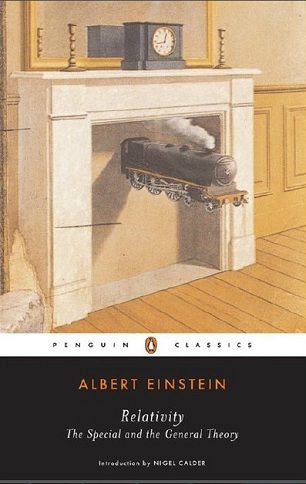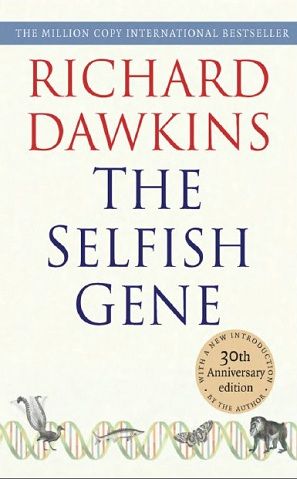25 Greatest Science Books of All Time l 265.37 MB
1. and 2. The Voyage of the Beagle (1845) and The Origin of Species (1859) by Charles Darwin [tie]
3. Philosophiae Naturalis Principia Mathematica (Mathematical Principles of Natural Philosophy) by Isaac Newton (1687)
4. Dialogue Concerning the Two Chief World Systems by Galileo Galilei (1632)
5. De Revolutionibus Orbium Coelestium (On the Revolutions of Heavenly Spheres) by Nicolaus Copernicus (1543)
6. Physica (Physics) by Aristotle (circa 330 B.C.)
7. De Humani Corporis Fabrica (On the Fabric of the Human Body) by Andreas Vesalius (1543)
8. Relativity: The Special and General Theory by Albert Einstein (1916)
9. The Selfish Gene by Richard Dawkins (1976)
10. One Two Three . . . Infinity by George Gamow (1947)
11. The Double Helix by James D. Watson (196
12. What Is Life? by Erwin Schrödinger (1944)
13. The Cosmic Connection by Carl Sagan (1973)
14. The Insect Societies by Edward O. Wilson (1971)
15. The First Three Minutes by Steven Weinberg (1977)
16. Silent Spring by Rachel Carson (1962)
17. The Mismeasure of Man by Stephen Jay Gould (1981)
18. The Man Who Mistook His Wife for a Hat and Other Clinical Tales by Oliver Sacks (1985)
19. The Journals of Lewis and Clark by Meriwether Lewis and William Clark (1814)
20. The Feynman Lectures on Physics by* Richard P. Feynman, Robert B. Leighton, and Matthew Sands (1963)
Not only did physicist Richard Feynman win the 1965 Nobel Prize for his work on quantum electrodynamics, he once played bongos for a San Francisco ballet. The beloved book Surely You're Joking, Mr. Feynman! recounts his raucous adventures, but these undergraduate physics lectures, presented over two years at Caltech in the 1960s, are Feynman's true gift to students at all levels. The first 94 lectures cover a wide swath of basic physics, from Newtonian mechanics to electromagnetism, while the final 21 venture into quantum mechanics. Feynman's characteristic humor and peerless explanations elevate these classroom lessons to enduring classics.
"Feynman, the prankster-genius, appeals no matter what field you're in. It helps to know some basic physics to approach his lectures, but he has such a luminous mind and is so good with metaphor that you can grasp a fair amount about what's going on in modern physics without formal understanding of complex math, up to a point." -psychiatrist Richard A. Friedman, Cornell University
21. Sexual Behavior in the Human Male by Alfred C. Kinsey et al. (194
The first of two books known collectively as the Kinsey Report, this treatise became an improbable best seller. With raw, technical descriptions of sexual acts, distilled from thousands of interviews, it documented for the first time what people really do behind closed doors. Many researchers consider the book flawed because of its sampling bias: Most of the men interviewed were young, white, and eager to participate. Nevertheless, the work remains an outstanding model of scientific bravery in the 20th century, with its insistence that sexual acts be described as healthy functions of the human body and that cultural taboos not stand in the way of science.
Not available
22. Gorillas in the Mist by Dian Fossey (1983)
In a richly hued portrait of the lives and behavior of African mountain gorillas, Fossey documents her 13 years dwelling in a remote rain forest amid these enigmatic animals. One of a trio of protégés picked by famed anthropologist Louis Leakey to conduct field studies of great apes, Fossey was determined, devoted, and often angry-over the apes' diminishing habitat and especially over the danger they faced from poachers (who may have been responsible for Fossey's 1985 murder). In Gorillas she leaves behind a scientific treasure, one rendered more poignant by her death in the service of these peaceful, intelligent beasts.
Not available
23. Under a Lucky Star by Roy Chapman Andrews (1943)
Roy Chapman Andrews made scientific history during the 1920s by leading five motorized expeditions into unexplored reaches of the Gobi desert. He emerged with the equivalent of paleontological gold: more than 350 new species (including the dinosaurs Protoceratops and Velociraptor), the first fossils of Cretaceous mammals, and the first nests of dinosaur eggs. He packed out plenty of wild tales, too, which are woven into this engaging autobiography. Rumors persist that the fedora-wearing, snake-hating, death-defying explorer may have served as the inspiration for Hollywood's Indiana Jones.
24. Micrographia by Robert Hooke (1665)
A revelation in its time, Micrographia exposed the previously hidden microscopic world. Hooke, an early developer of the compound microscope, used his device to peer at the eyes of flies, the stinger on a bee, hairs, bristles, sand particles, seeds, and more, noting every detail with both words and masterful illustrations. The original book is a hefty three pounds, so the digital versions now available are more convenient, but there is something to be said for flipping through a printed copy and discovering, like a hidden treasure, each drawing in its beautiful intricacy. (Available on CD-ROM.)
25. Gaia by James Lovelock (1979)
Link :
Code:http://rapidgator.net/file/3b2c5780d3102b4e2a0a91e2e9305704/25_Greatest_Science_Books_of_All_Time.rar.html
Please visit our sponsors
Results 1 to 1 of 1
Hybrid View
-
11-01-2014, 06:01 PM #1Senior Investor

- Join Date
- Jan 2012
- Posts
- 7,166
- Feedback Score
- 0
- Thanks
- 0
- Thanked 6 Times in 6 Posts
 25 Greatest Science Books of All Time
25 Greatest Science Books of All Time
-
Sponsored Links
Thread Information
Users Browsing this Thread
There are currently 1 users browsing this thread. (0 members and 1 guests)
24 Hour Gold
Advertising
- Over 20.000 UNIQUE Daily!
- Get Maximum Exposure For Your Site!
- Get QUALITY Converting Traffic!
- Advertise Here Today!
Out Of Billions Of Website's Online.
Members Are Online From.
- Get Maximum Exposure For Your Site!
- Get QUALITY Converting Traffic!
- Advertise Here Today!
Out Of Billions Of Website's Online.
Members Are Online From.






 LinkBack URL
LinkBack URL About LinkBacks
About LinkBacks











